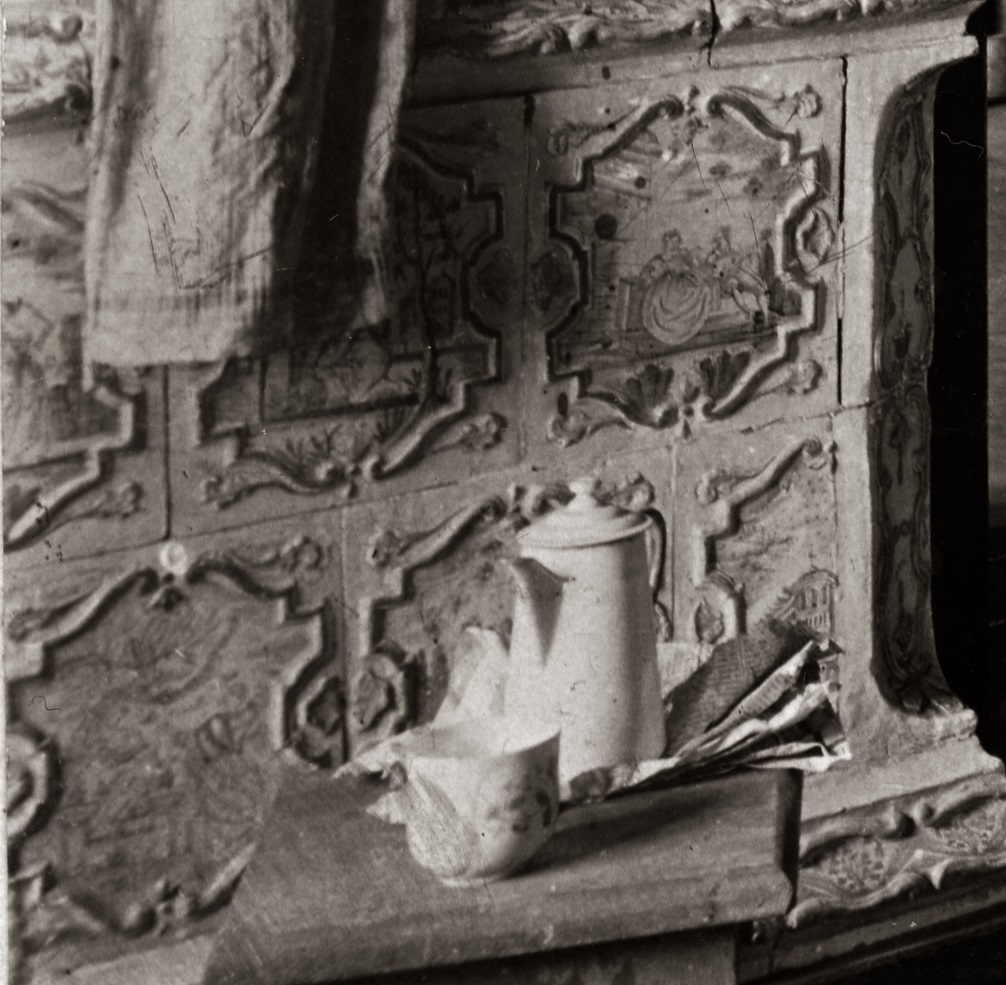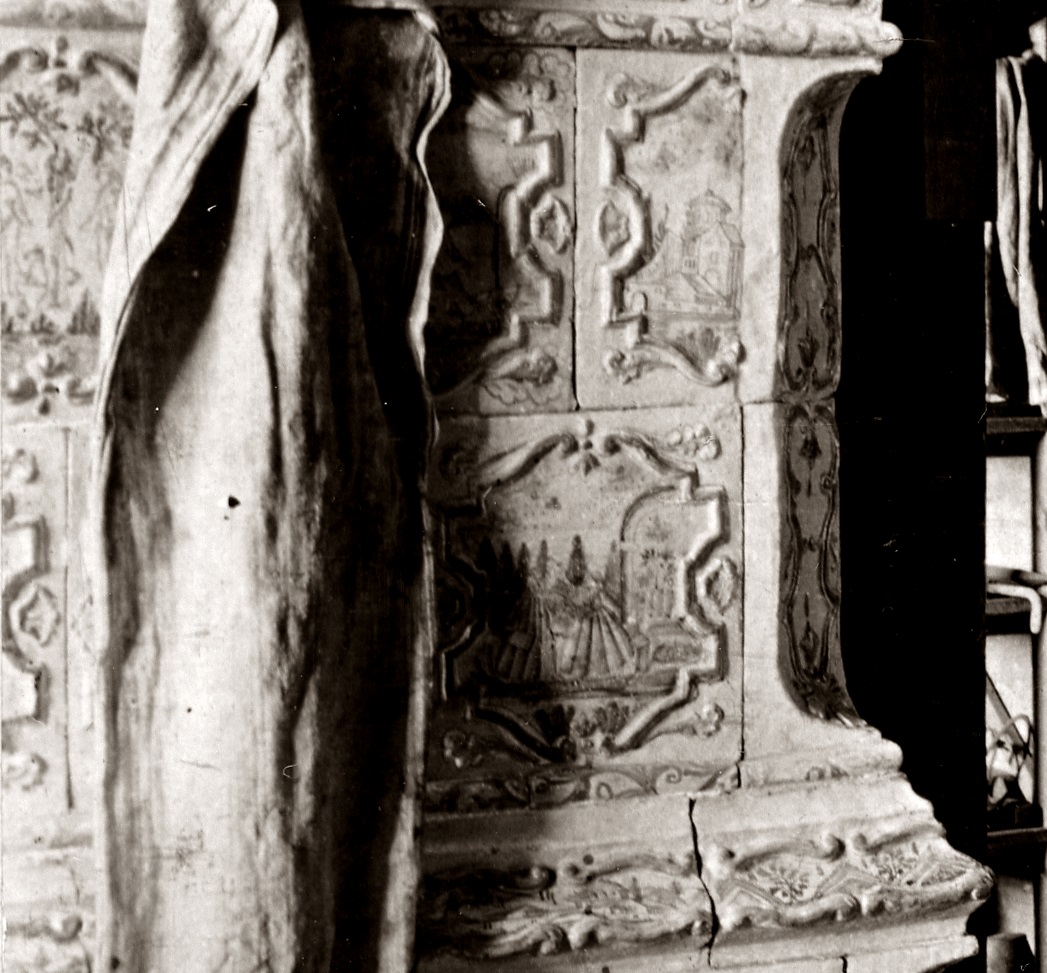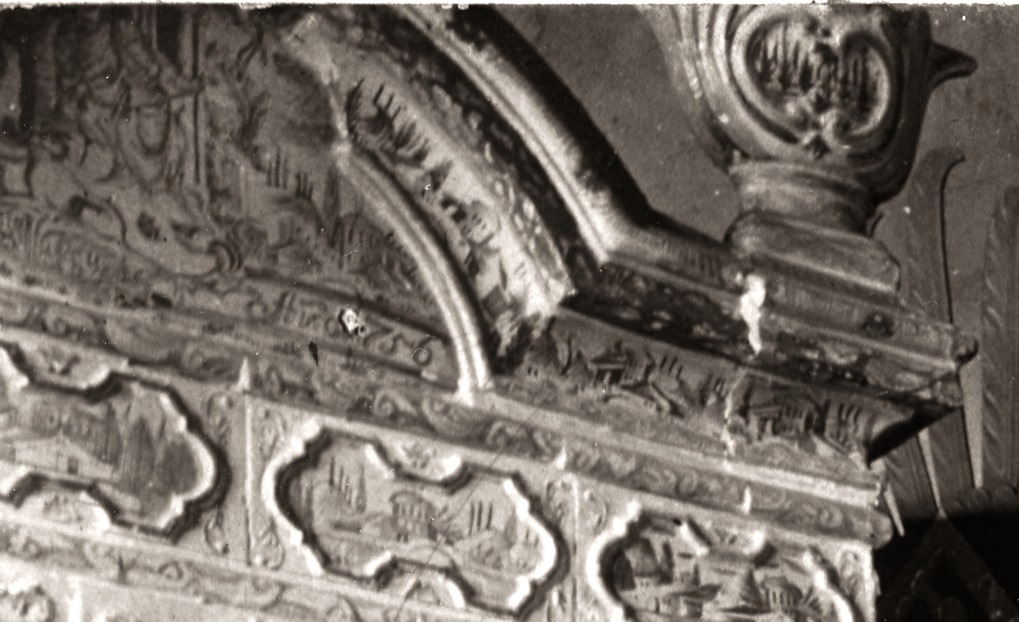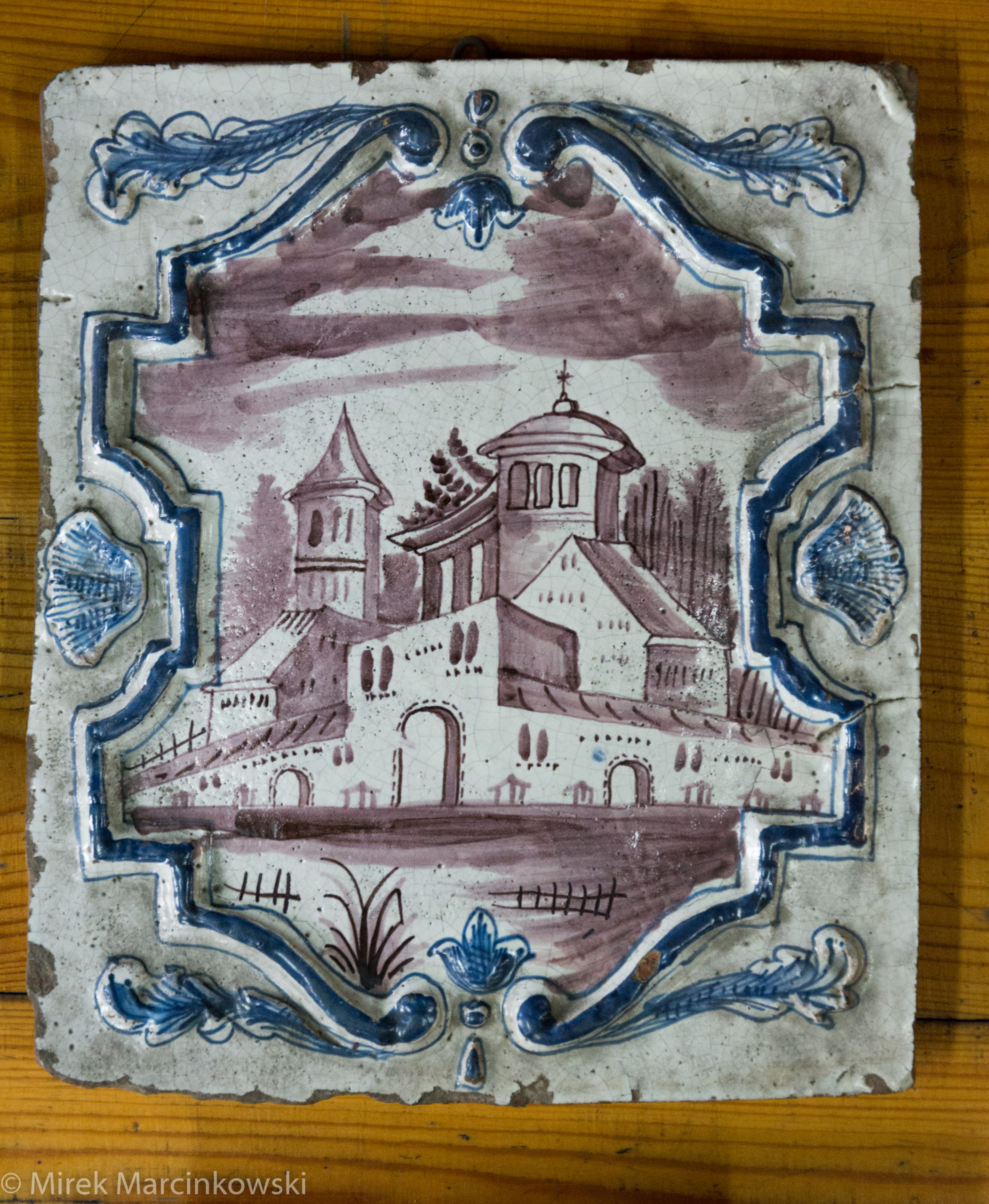provenance: Royal Prussia
workshop: unknown
pottery and stove fitting; stamping in matrices, manual processing, engobing, glazing, underglaze painting with cobalt and manganese compounds, multiple firing, stove fitting; dimensions: unknown
signatures, inscriptions: in the pediment of the furnace the inscription “Anno 1756”
pre-war inv. no .: unknown
date when the work was lost: 1945–1961
current place of storage, inv .: dispersed. Inw. MZM / K / 331–341, 343–344, 347–349, 539. A total of 17 livestock items preserved.
The furnace was purchased for the castle collection in the 1890s and intended for the Bell-ringer Chamber in the Priest Tower [1]. It came from the town of Lichtenau, probably from today’s Lechów near Braniewo. An inventory drawing was made in 1895 [2]. Only seventeen whole and a few fragments of tiles remained from the stove, which are now in the Museum Tile Collection in Malbork. The archival photograph shows only a few missing pieces, and of the surviving ones, only some friezes and cornices, as well as a front fragment with a biblical scene and an architectural landscape. Although not all tiles are visible in this photograph, on the basis of one, we can observe on lucky surviving tile showcasing an architectural landscape [3] that is similar in technical features and decoration, in the collection of the Museum of the Kujawsko-Dobrzyń Land in Włocławek[4]. It is difficult to prove whether it came from this furnace, but all the technical features and decorations indicate it, and the exact origin of this single tile in the local collections is not known. It was obtained most probably in 1960 from the old collections of PTTK (Polish Touring Society).
A tiled stove, three-story, on stone spheres, with chamfered corners of each two-row floor, topped with a hemispherical pediment with a broken, profiled cornice and three acroterions in the shape of vases. In the pediment, the date “Anno 1756” and a shepherd scene with a visible fragment of a man with a dog at his feet, and on the right – buildings among trees. On the cornices and friezes, architectural landscapes or a rush motif are painted, similar to the unpreserved acroterion. Each story was made up of two rows of tiles in a staggered pattern. Unfortunately, it is not known how the other two acroterions were decorated. On the facing tiles, painted decorations depicting biblical scenes, court scenes and architectural landscapes in relief cartouches with acanthus leaves and palmettes. Three-color scheme. Relief decoration painted with blue dye. Paintings in cartouches painted in purple-brown.
Here are short descriptions of the painterly decorations on the lost tiles that have been selected from the photographs
[a] Tile, facing tile from the second row of the first floor from the bottom of the furnace. In the cartouche there is a painting depiction of a woman and a man sitting on a bench in a garden scenery and playing instruments [1a].
[b] Tile, facing tile from the first row of the second floor from the bottom of the furnace. In the cartouche there is a painting depiction of a meeting of two women in a garden scenery. What is characteristic of this representation are the fan-shaped forms of women’s dresses and the shapes of the cypress trees in the background [1b].
[c] Tile, facing tile from the second row, on the third floor from the bottom of the furnace. In the cartouche there is a painting depiction of a woman and a man standing in a garden scenery. A woman in an ankle-length dress and a waistcoat shows the man the direction of a walk in the garden with her right outstretched hand. A man with knee-length pants, a short jacket and a hat on his head, standing to her left, is facing in the opposite direction. He rests his right hand on his hip, and the left hand on a cane [1c].
[d] Tile, facing tile from the second row, on the third floor from the bottom of the furnace. In the cartouche there is a painting depiction of a woman and a man standing next to each other and probably talking because they are facing each other. The woman is shown frontally, the man is shown from the back. Behind the woman, on the left, there is a large tree. On the right side of the frame, a building with a tower covered with a cupola in the background [1c].
[e] Tile, facing tile from the first row, on the third floor from the bottom of the stove. In the cartouche there is a painting depiction of a man in knee-length trousers and a long habit walking to the left along a road among soaring bushes. He carries a long pole-like object on his shoulder. It is difficult to identify the item behind the character[1c].
[f] Tile, facing tile from the first row, on the third floor from the bottom of the stove. In the cartouche there is a painting depiction of a man in knee-length trousers, a short caftan and a beret on his head, leaning against a tree on the left side. His right leg is bent at the knee and folded behind his left. Buildings in the background [1c].
[g] A chalice-shaped acroterion decorated with a reserve of C-profiles and a painted rush motif, identical to the preserved frieze tiles [1d]. A fragment of the acroterion has been preserved in the collection, but it has a different painting decoration, hence it can be presumed that it was one of those not recorded by photography.
(compiled by Dr. B. Pospieszna)
1. Marienburg Baujahr 1904, il. 5.








